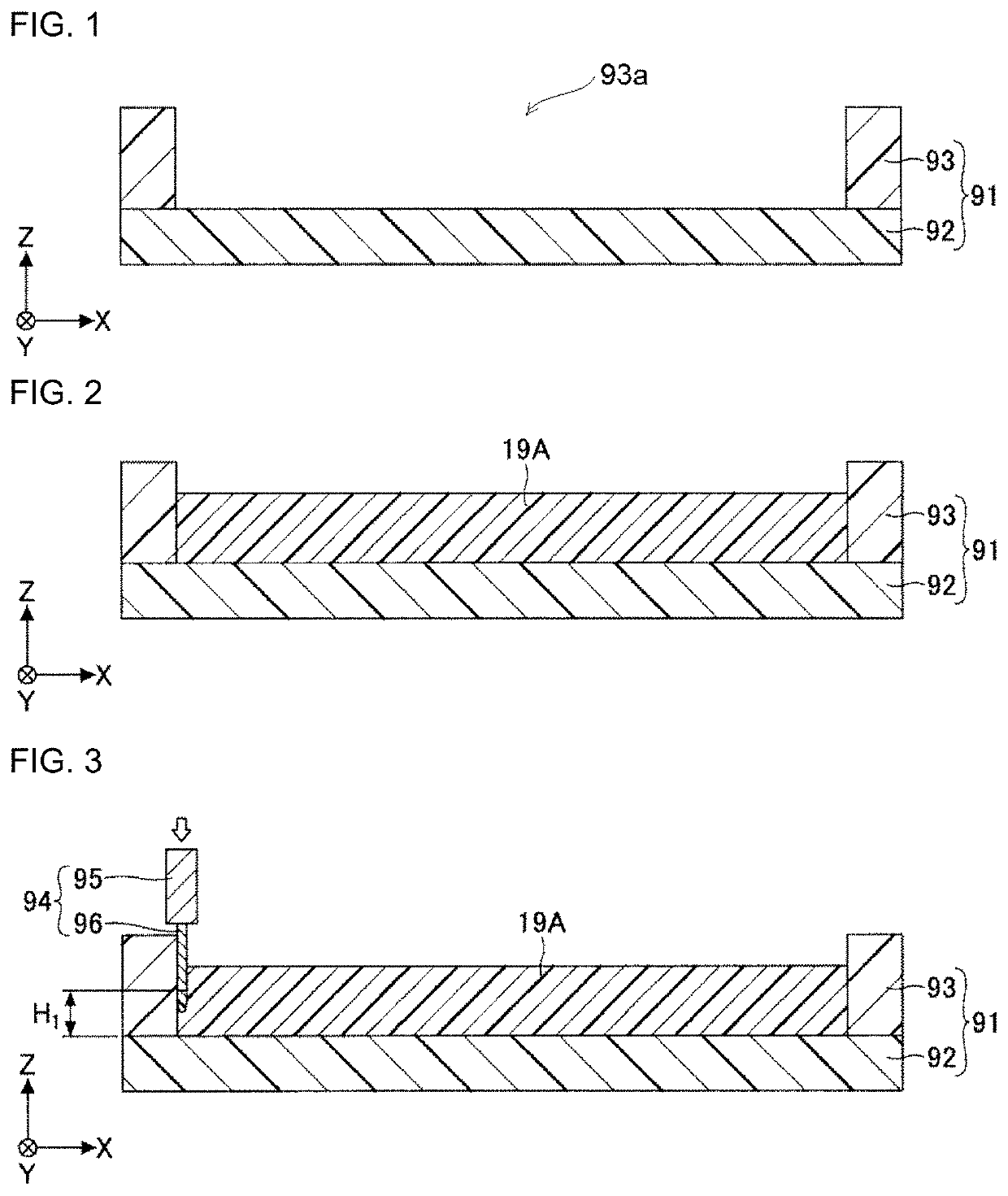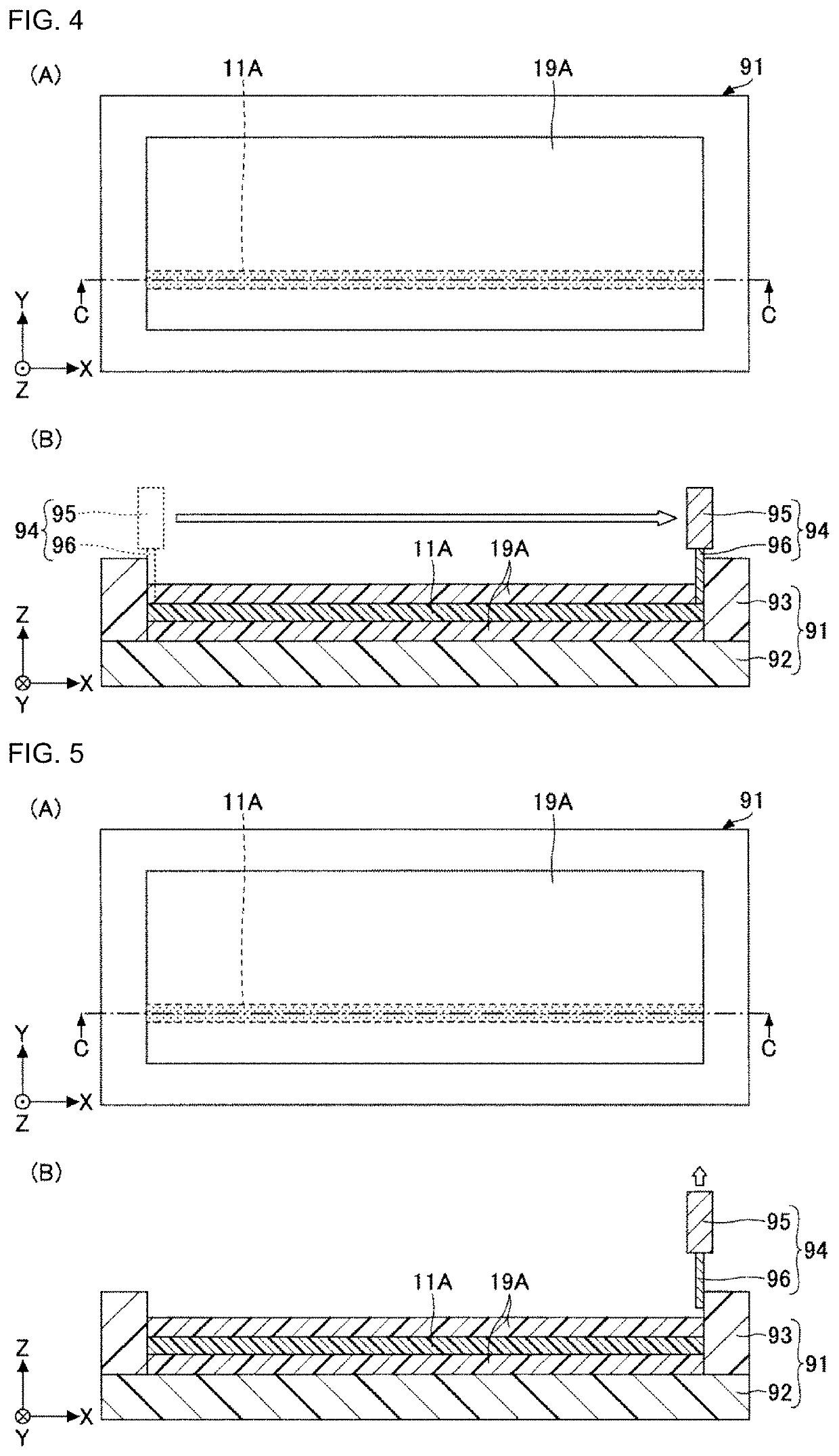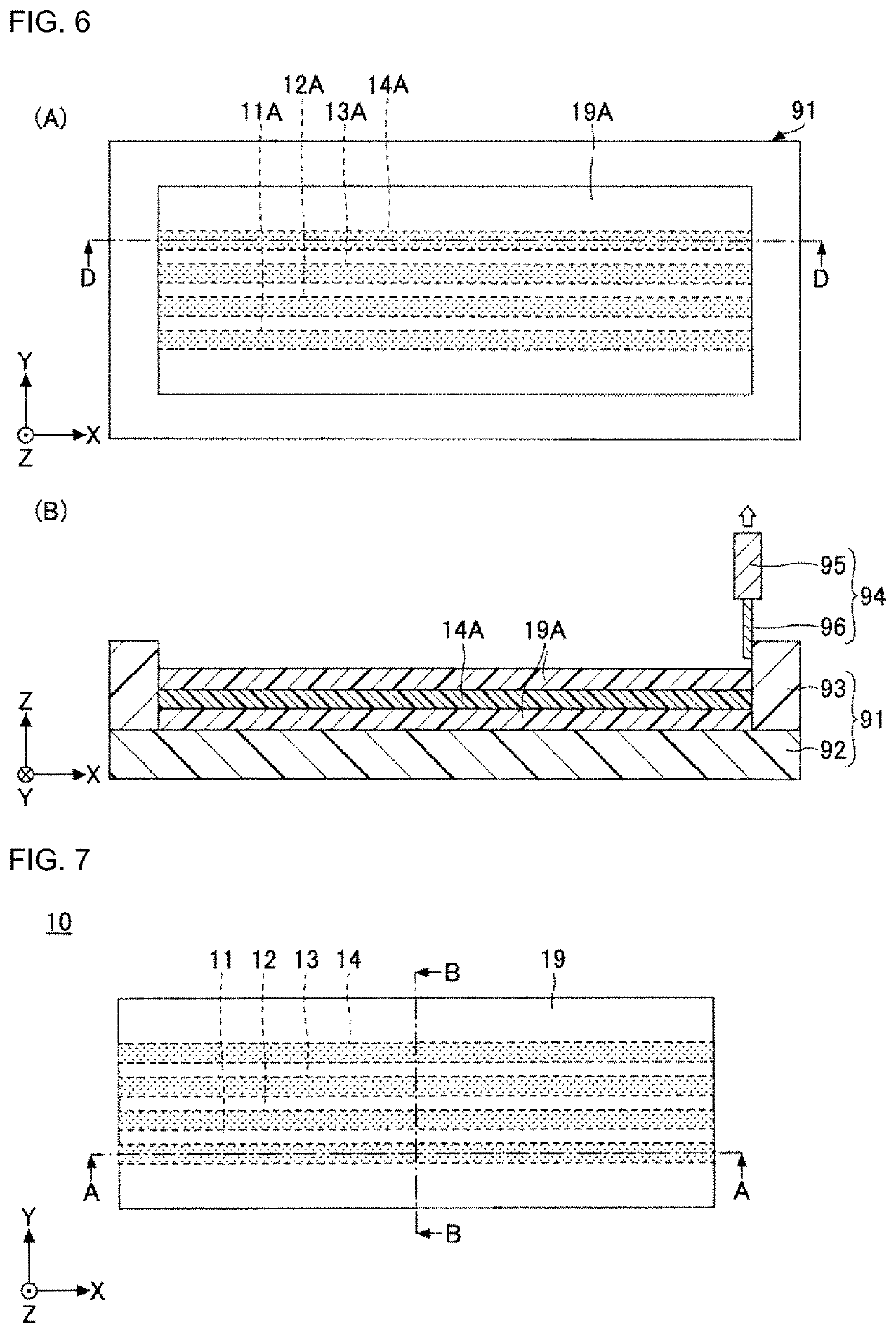Method for manufacturing gi optical waveguide
- Summary
- Abstract
- Description
- Claims
- Application Information
AI Technical Summary
Benefits of technology
Problems solved by technology
Method used
Image
Examples
example 2
[Manufacturing Example 2] Manufacturing of Reactive Silicone Compound (SC2)
[0106]A 200 mL eggplant-shaped flask equipped with a condenser and a Dean-Stark apparatus was charged with 43.3 g (0.20 mol) of DPSD, 44.9 g (0.20 mol) of STMS, and 35 g of toluene, and air in the flask was purged with nitrogen by using a nitrogen balloon. The reaction mixture was heated to 50° C., and then 38 mg (0.2 mmol) of barium hydroxide monohydrate [available from Aldrich] was added to the flask. The mixture was stirred at 50° C. for one hour, and then further heated to 85° C. Thereafter, while by-produced methanol was removed to the outside of the reaction system, the mixture was stirred for five hours for dealcoholization condensation. The resultant reaction mixture was cooled to room temperature (about 23° C.), and insoluble matter was removed with a membrane filter having a pore size of 0.2 μm. Toluene was distilled off from the reaction mixture with a rotary evaporator under reduced pressure at 50...
example 3
[Manufacturing Example 3] Preparation of Curable Composition 1
[0108]98.6 Parts by mass of SC1 manufactured in Manufacturing Example 1, 1.4 parts by mass of DVB, and 1 part by mass of TPO were mixed together with stirring at 50° C. for three hours. The mixture was further stirred and defoamed for two minutes to thereby prepare curable composition 1.
[0109]The resultant composition was found to have a viscosity of 51,300 mPa·s at 25° C.
examples 4 to 6
[Manufacturing Examples 4 to 6] Preparation of Curable Compositions 2 to 4
[0110]Curable compositions 2 to 4 shown in Table 1 were prepared in the same manner as in Manufacturing Example 3. The viscosities of the resultant compositions at 25° C. are also shown in Table 1.
TABLE 1SC1SC2DVBDOGTPOI127[Parts[Parts[Parts[Parts[Parts[PartsbybybybybybyViscositymass]mass]mass]mass]mass]mass][mPa · s]Curable98.61.4151,300composition 1Curable87.512.5119,000composition 2Curable93.066.9434,700composition 3Curable7525113,800composition 4
PUM
 Login to View More
Login to View More Abstract
Description
Claims
Application Information
 Login to View More
Login to View More - R&D
- Intellectual Property
- Life Sciences
- Materials
- Tech Scout
- Unparalleled Data Quality
- Higher Quality Content
- 60% Fewer Hallucinations
Browse by: Latest US Patents, China's latest patents, Technical Efficacy Thesaurus, Application Domain, Technology Topic, Popular Technical Reports.
© 2025 PatSnap. All rights reserved.Legal|Privacy policy|Modern Slavery Act Transparency Statement|Sitemap|About US| Contact US: help@patsnap.com



